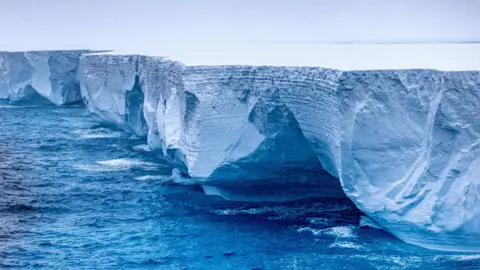ARTICLE AD BOX

 Reuters
Reuters
A23a is twice the size of Greater London and will likely break up and melt as it drifts north
The world's biggest iceberg is on the move again after being trapped in a vortex for most of the year.
A23a is 3,800 sq km (1,500 sq miles), which is more than twice the size of Greater London, and is 400m (1,312ft) thick. It broke free of Antarctica in 1986 though soon became stuck just off the coast.
The depth of the iceberg meant its bottom became lodged on the floor of the Weddell Sea, part of the Southern Ocean, where it remained static for more than 30 years.
It began to move northwards in 2020 but, since the spring, has been spinning on the spot after it was caught in a rotating column of water near the South Orkney Islands.
On Friday the British Antarctic Survey (BAS) said it was now drifting further north.
Dr Andrew Meijers, an oceanographer at the BAS, said: "It's exciting to see A23a on the move again after periods of being stuck.
"We are interested to see if it will take the same route the other large icebergs that have calved off Antarctica have taken."
It is thought A23a will eventually leave the Southern Ocean and enter the Atlantic Ocean where it will encounter warmer waters and likely break up into smaller icebergs and eventually melt.
Dr Meijers and the BAS are examining the impact of icebergs on local ecosystems after they pass through them.


A year ago researchers aboard the RRS Sir David Attenborough collected data from the water around A23a.
Laura Taylor, a biogeochemist who was part of the crew, said: "We know that these giant icebergs can provide nutrients to the waters they pass through, creating thriving ecosystems in otherwise less productive areas.
"What we don't know is what difference particular icebergs, their scale, and their origins can make to that process."

 1 month ago
13
1 month ago
13








 English (US) ·
English (US) ·